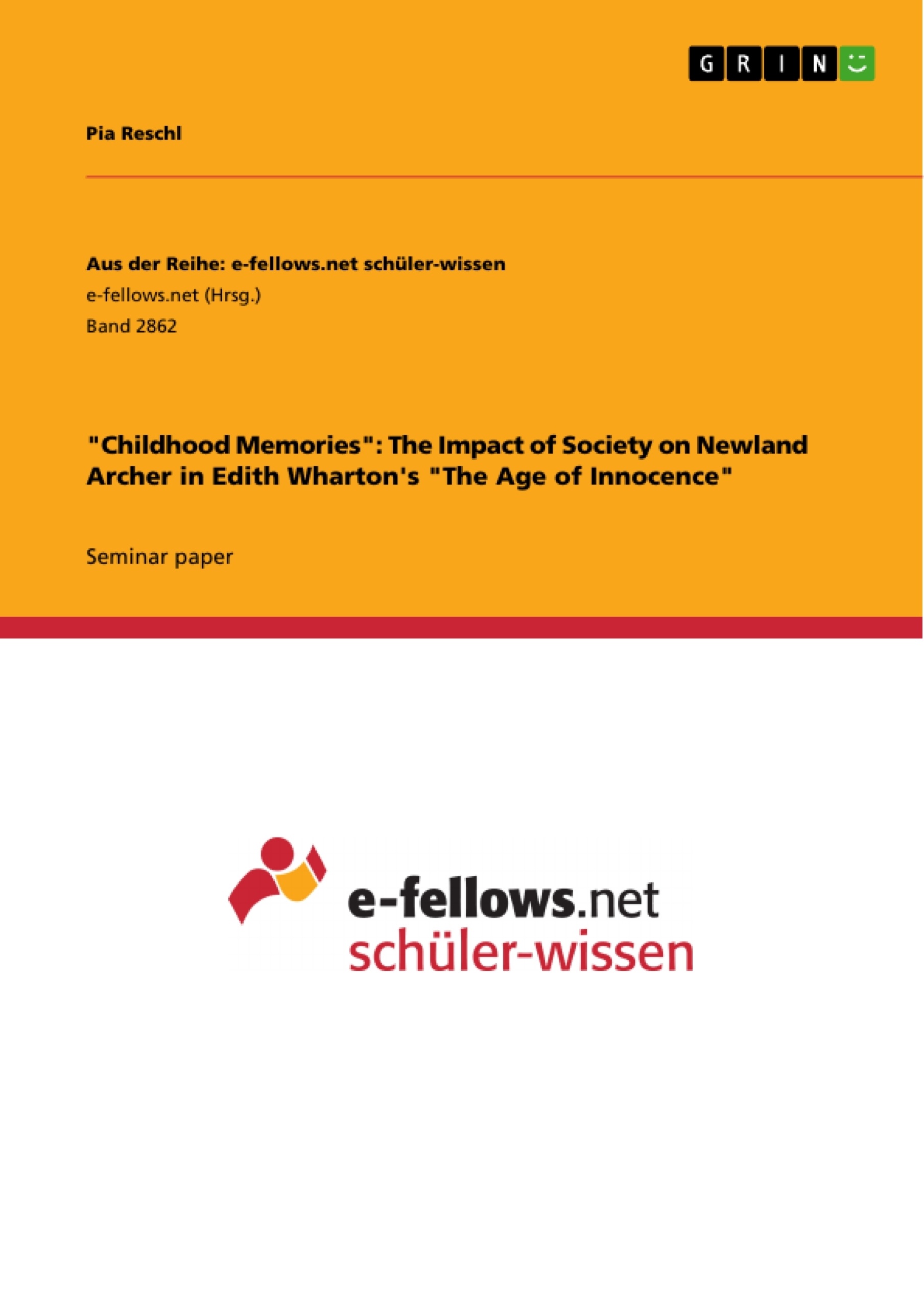Edith Wharton’s description of the protagonist in her novel The Age of Innocence, published in 1920, unveils the significant influence of the small New York City society the author grew up in. Having lived in New York of the Gilded Age, Wharton provides a rich description of the life of the upper class in The Age of Innocence—and contrasts this life to the European society she had encountered during her numerous travels. The story of Newland Archer, a young lawyer from a respected upper-class family, who is torn between marrying his betrothed May Welland and thereby following society’s expectations and entering into a relationship with her cousin, Ellen Olenska, and with that superordinate his personal happiness, won Edith Wharton a Pulitzer Prize in 1921. In The Age of Innocence, Newland Archer’s life is predestined by the enclosed society of New York City which finds expression in his eventual decision to marry May Welland, separate with Ellen Olenska who transgresses the boundaries of this society, and feeling misplaced as the world familiar to him approaches change.
TABLE OF CONTENTS
1. Introduction
2. The Impact of Old New York Society on Newland Archer
2.1 A Seemingly Perfect Couple: Archer's Marriage with May
2.2 Society's Boundaries: Ellen Olenska as the “polluting Force”
2.3 The “Vanished America”: Wharton's Depiction of Old Newland Archer
3. Conclusion
Works Cited
- Citar trabajo
- Pia Reschl (Autor), 2021, "Childhood Memories": The Impact of Society on Newland Archer in Edith Wharton's "The Age of Innocence", Múnich, GRIN Verlag, https://www.grin.com/document/1176176
-

-

-

-
¡Carge sus propios textos! Gane dinero y un iPhone X. -

-
¡Carge sus propios textos! Gane dinero y un iPhone X. -

-
¡Carge sus propios textos! Gane dinero y un iPhone X. -

-
¡Carge sus propios textos! Gane dinero y un iPhone X. -

-
¡Carge sus propios textos! Gane dinero y un iPhone X. -

-
¡Carge sus propios textos! Gane dinero y un iPhone X.

